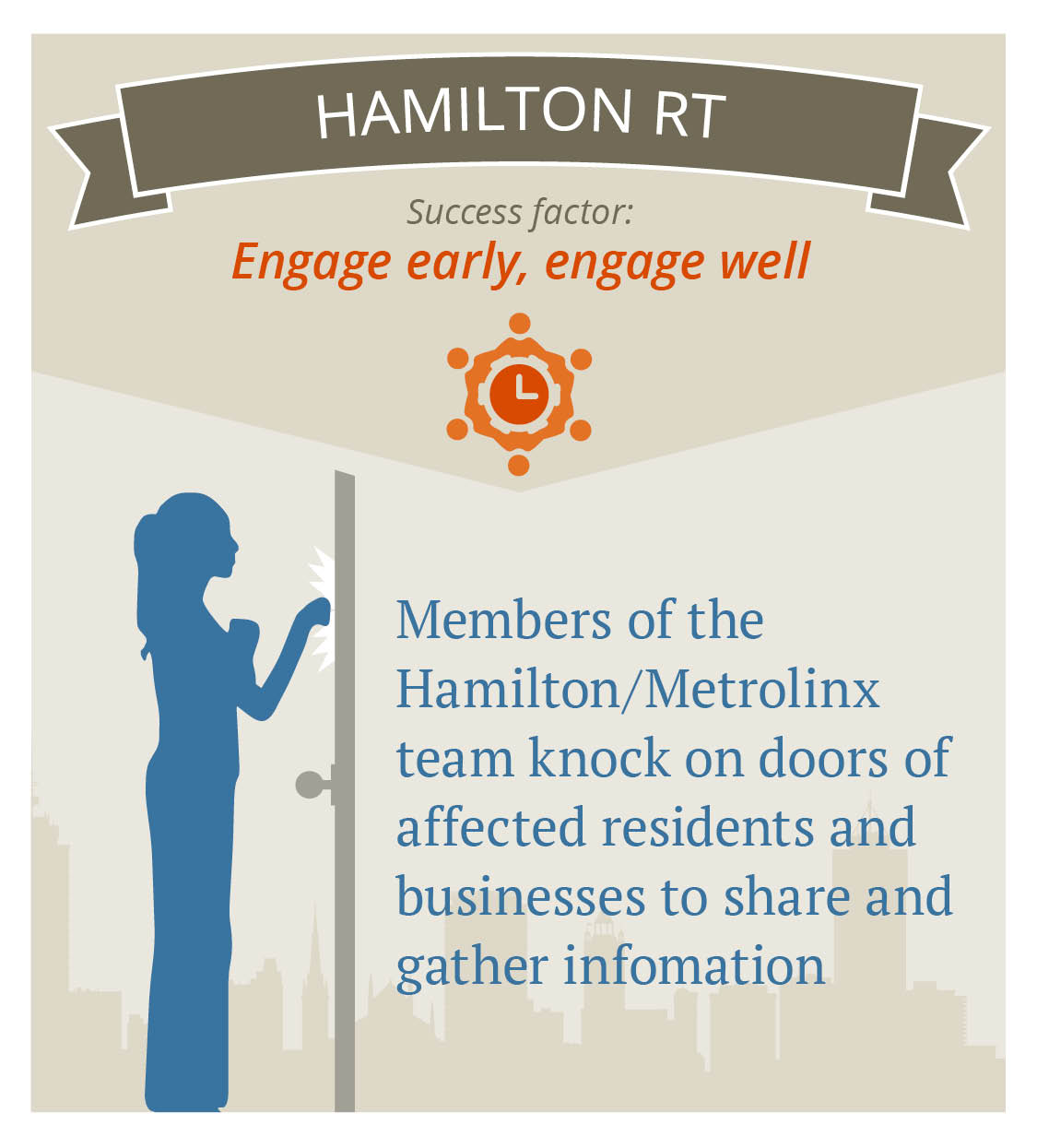Best practices and lessons learned in the Hamilton LRT B-line
Story by Pembina Institute-
The current roll-out of rapid transit in Ontario is one of the biggest infrastructure builds in the province’s history, with over $30 billion in investment from the Province of Ontario and major inputs from the federal and municipal governments.
The Hamilton LRT B-line is one of these projects. Planned for downtown Hamilton, running along Main St. and King St. between McMaster University and the Queenston Traffic Circle, it will be the first rapid transit in this fast-growing community. Construction is expected to begin in 2019.
With such significant investments at stake, it's important to get the process right. In the report Getting on Board: Learning from planning and engagement around rapid transit projects in Ontario published by the Pembina Institute and Evergreen, we showcase local planning and engagement efforts around four rapid transit projects including the Hamilton LRT B-line.
Some highlights in the City of Hamilton are:
- Hamilton’s Community Connectors: project team members make twice yearly visits to businesses and residents along the proposed LRT corridor to provide project information and help identify and respond to specific local concerns.
- Hamilton city council established an LRT subcommittee that has a membership of seven city councillors but also includes representatives of local BIAs, the Chamber of Commerce, educational institutions and the local homebuilder’s association as advisors. This approach ensures that these stakeholders have direct access to information and can give detailed feedback on the project.
- The Hamilton Chamber of Commerce established an LRT Task Force. One of the key roles of the task force has been to generate third-party information about the potential benefits of the LRT, particularly from a business perspective.
- The City of Hamilton developed a new zoning bylaw designation for the corridor, which includes requirements for built form and integration with the neighbourhood, special provisions around stations, minimum building heights, maximum vehicle parking requirements and minimum bike parking requirements.
- The Metrolinx Engage online platform gives opportunities to provide feedback on projects at whatever time is most convenient for the participant.
To read the full report or see our infographic, blog and media release, visit the Pembina Institute website.
For more information on the project, visit the project websites offered by the City of Hamilton and Metrolinx.



Comments